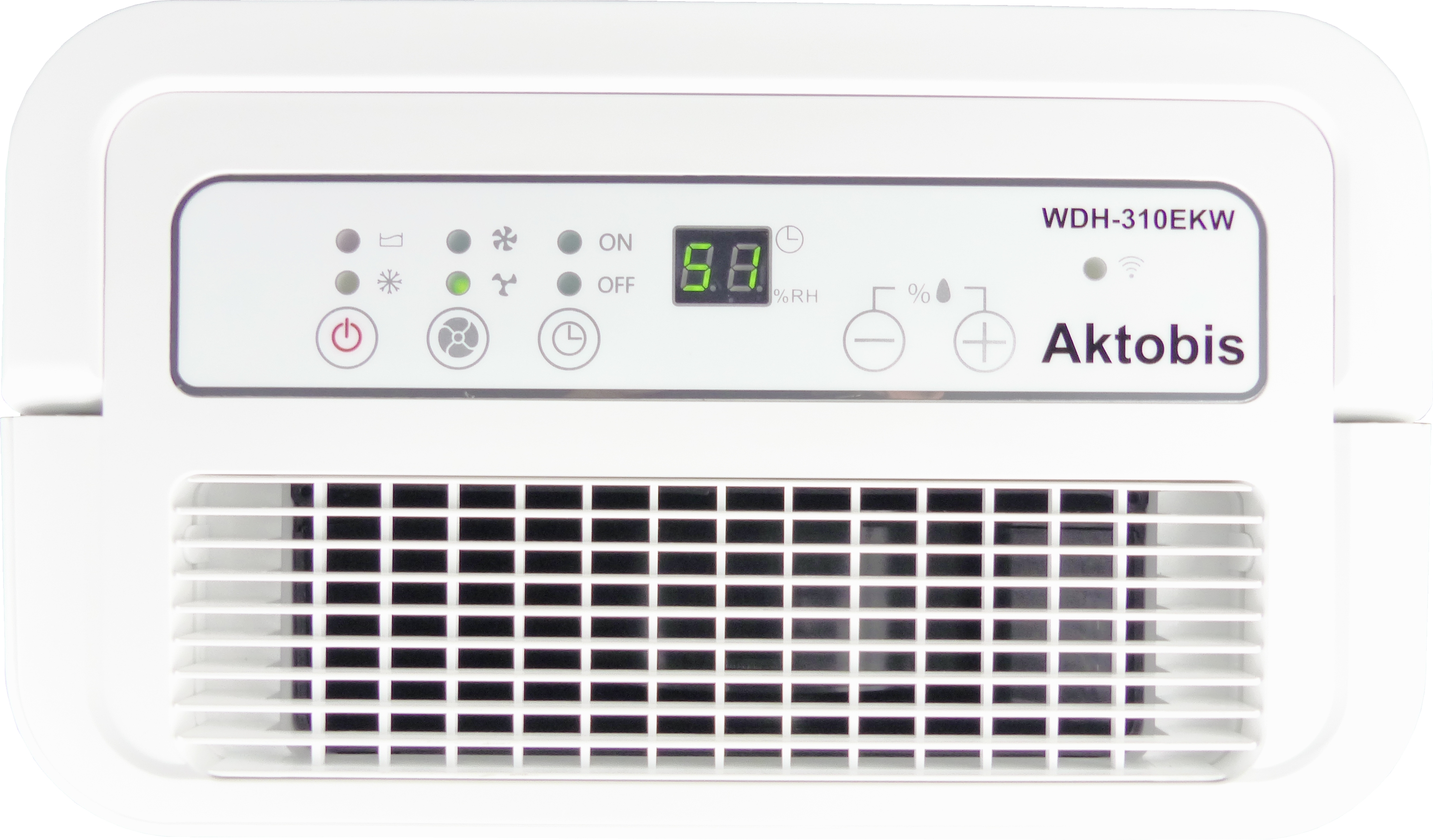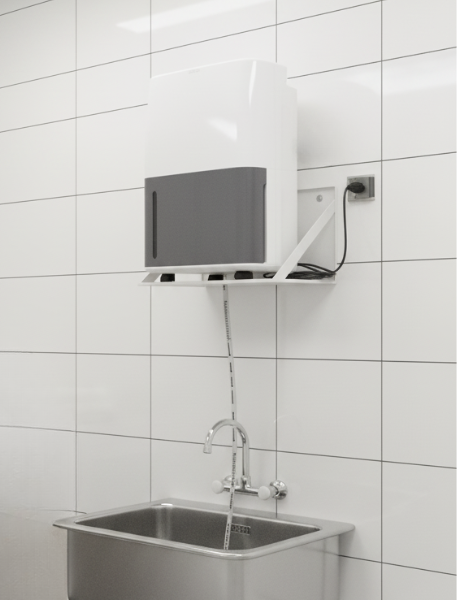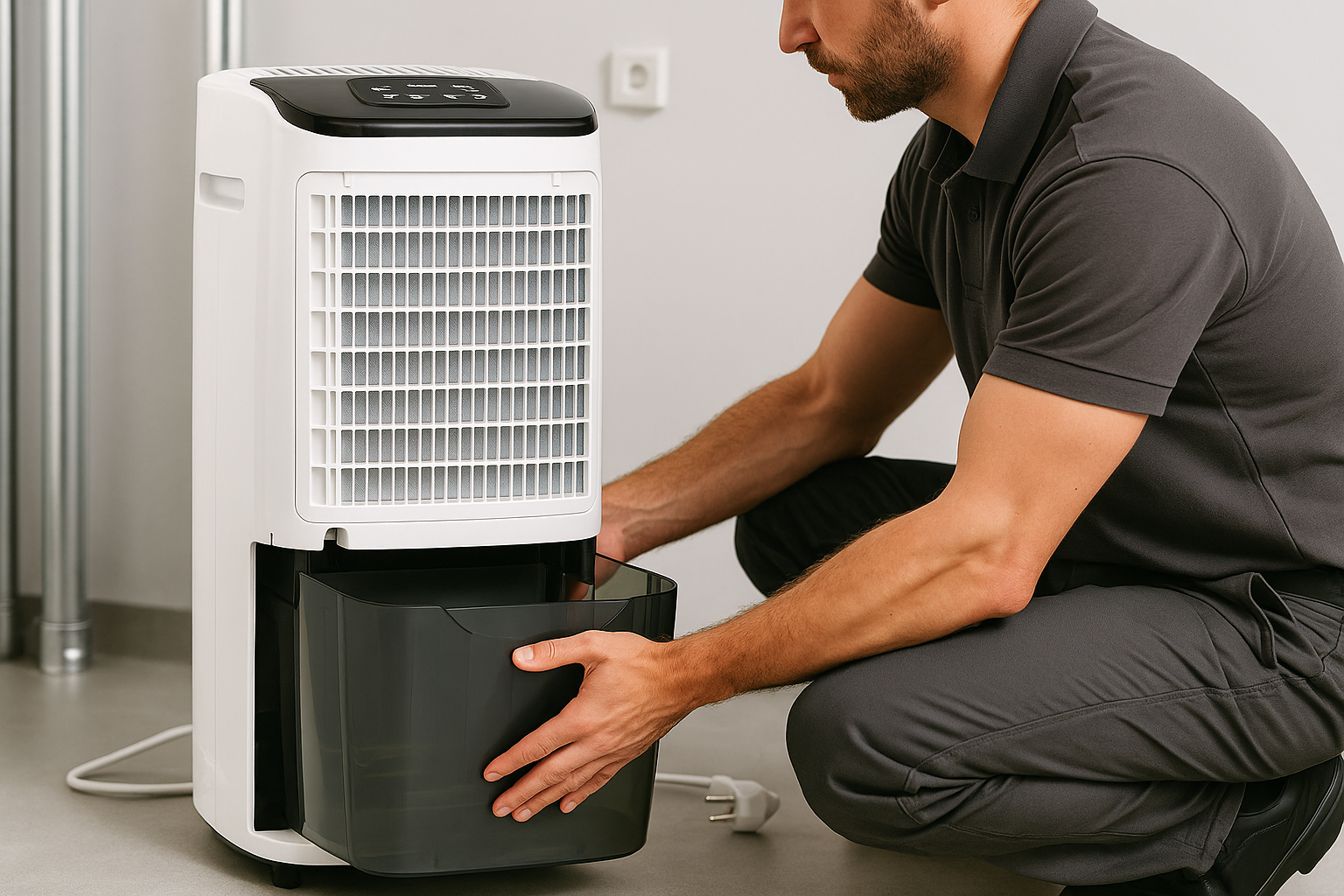Buying a dehumidifier: Understanding technical data and functions
Updated 19.12.2025 Reader time 2 minutes
What capacity should a dehumidifier have for my room?
The right capacity depends on the size of the room and the humidity level. For small rooms, an appliance with a capacity of 10 to 14 litres may be sufficient, while a model with a capacity of 20 to 40 litres is often required for basements or large rooms.
To make the selection process easier, this table lists our dehumidifier models according to their dehumidification capacity and the corresponding room size.
room size Dehumidification model
- up to 15 m2 up to 8 litres/day WDH-106LE
- up to 20 m2 up to 720 ml/day WDH-898MD
- up to 25 m2 up to 10 litres/day WDH-DS3
- up to 25 m2 up to 12 L/day WDH-310EKW
- up to 30 m2 up to 16 L/day WDH-214US
- up to 40 m2 up to 20 L/day WDH-416S
- up to 50 m2 up to 25 L/day WDH-520EB
- up to 50 m2 up to 25 L/day WDH-725DG
What is the difference between compression and adsorption dehumidifiers?
Compression dehumidifiers perform best in warm, humid rooms and are more cost-effective for most households. They work by lowering the air temperature to the dew point, where the water present in the air in the form of vapour condenses. This is why they use a refrigerant and lose efficiency at low temperatures.
- Take a look at an example here WDH-520EB
Adsorption dehumidifiers (desiccants) work well in cold rooms and are quieter but less energy efficient. They are particularly practical in late autumn and winter when condensation occurs in unheated rooms in the house (such as the garage).
- Take a look at our very popular adsorption model here WDH-DS3
Which functions are useful in a dehumidifier?

- Hygrostat - A hygrostat works like a thermostat and makes the appliance programmable. This means that you can set the desired humidity and the dehumidifier switches on and off automatically depending on the relative humidity in the environment. In this way, the compressor only runs when needed, which reduces power consumption and prevents excessive dehumidification. A common setting is 55 %. Below 50 %, the room is too dry.
- Timer - You can programme the dehumidifier to work at specific times.
- WLAN - You can set up and operate your dehumidifier remotely and receive notifications, for example when the tank is full. If it's in your basement, you don't have to climb up and down the stairs to operate it.
.png)
- Condensation capacity: This describes how much condensation water the tank can hold. All our models also have an auto-stop function (which works with a float) so that the dehumidifier stops when the tank is full to prevent overflowing. When this level is reached, the tank must be emptied either manually, via a hose or with a pump.
- Handles and wheels - if you want to transport the appliance and carry it up and down stairs, pay attention to the handles. Some dehumidifiers can be lifted with one hand, others need to be carried with both hands.
- Connection to a hose - if the tank fills up too quickly, it may be useful to connect it to a hose (for draining, but only downwards).
- Space for a pump - if the dehumidifier needs to be run for a long period of time, it may be useful to buy accessories such as a pump, hose and non-return valve. These will empty the tank when it reaches a certain level and pump the water out of the tank. The hose should be long enough to reach a drain. A non-return valve is also recommended so that the water remaining in the hose does not flow back into the pump.
Should I consider accessories?
Dehumidifiers are fully functional, but accessories can help make dehumidification more autonomous.
- Condensation hose: By connecting a hose, the collected condensation water can be drained away permanently. It flows downwards and is therefore intended to be drained
 g into a floor drain or a raised sink if the appliance is placed in an elevated position (e.g. on a dehumidifier shelf).
g into a floor drain or a raised sink if the appliance is placed in an elevated position (e.g. on a dehumidifier shelf).
- Shelf for dehumidifier: it is particularly suitable for rooms in which there is only a higher water drain. here
- Condensate pump: the condensate pump is placed directly in the tank of the dehumidifier and fixed to the bottom of the tank using suction cups. The condensate tank can be emptied upwards using a pump (into a raised drain, outwards through a window, etc.). The size of the pump depends on the height to which the water needs to be pumped.
- Non-return valve: When using a pump, a check valve is recommended to prevent the water from flowing back when the pump is switched off.
- HEPA filter - if odours are noticeable, a HEPA filter helps to clean the air of spores. This option is available (as an accessory) with our DS3 model.


